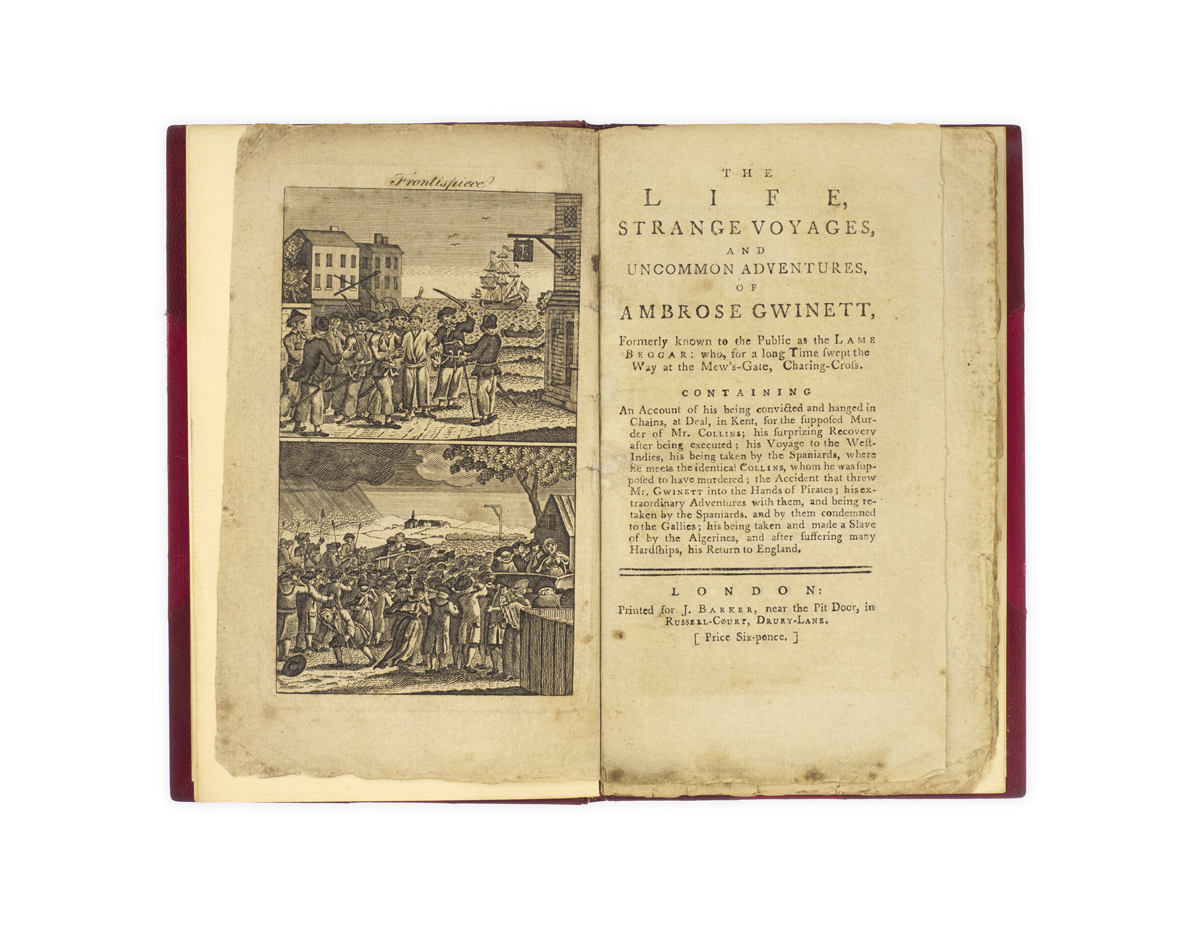
oiling the gears of Britain’s Abyssinian invasion
DUFTON, Henry.
Narrative of a journey through Abyssinia in 1862-3. With an appendix on “The Abyssinian captives question” …
London, Chapman & Hall, 1867.
8vo, pp. xiv, 337, [1]; with half-title, 1 coloured folding map as frontispiece, and 2 further folding sketch maps; title and final page a little dusty; very good in original maroon cloth, spine lettered in gilt, covers embossed in blind; rebacked with spine laid down, some wear to spine, covers, and corners, endpapers renewed; inscription ‘L. Ashburton 1868’, ‘Melchet Court Romsey’ ink stamp, and another inscription dated 1948 to half title.

Added to your basket:
Narrative of a journey through Abyssinia in 1862-3. With an appendix on “The Abyssinian captives question” …
First edition recounting the author’s expedition through Abyssinia, along with three essays on the Abyssinian prisoner crisis following a diplomatic dispute between the Emperor Tewodros II and the British colonial government.
Initially Dufton proposed to explore the highlands to the south of Abyssinia by way of the Blue Nile and the Didessa river but was forced to abandon the journey ‘having been robbed in the Bahiouda desert and detained three months in Sennaar by the rains’. Instead, Dufton made his way to Khartoum from where he commenced his journey through Abyssinia, initially in a south-easterly direction to Lake Tsana (Tana) before striking northwards to Massowah (Massawa) on the shores of the Red Sea, from where he took a boat to Aden (in present-day Yemen).
When Dufton set off he had little reason to believe his journey or subsequent narrative would assume much public importance, but this was soon changed by political developments in the area. In 1865, the Emperor Tewodros II – whom Dufton himself met at Dabra Tabor – imprisoned the British consul Charles Duncan Cameron along with a number of British subjects in an attempt to gain Queen Victoria’s attention following his unanswered letter requesting Christian assistance in fighting off the Muslim rebels then wreaking havoc throughout his kingdom. The case gained particular attention and spawned a number of works on the subject at home, perhaps most notably Charles Tilstone Beke’s The British captives in Abyssinia: Dufton himself relied on Beke when composing his maps for this present volume. Consequently, Dufton’s description of Abyssinia therefore not only assumed a new commercial appeal and military importance but is itself supplemented by three appendices describing the events leading up to the captivity, suggesting means by which the crisis could be resolved, and comparing practicable routes for an upcoming military liberation expedition. Although it is unlikely that Dufton’s suggestions had much influence on the matter, the British did launch a punitive military expedition the following year which easily routed Tewodros’ troops, conquered his capital of Magdala, liberated the prisoners, and forced the unfortunate and somewhat hapless Emperor to commit suicide.

